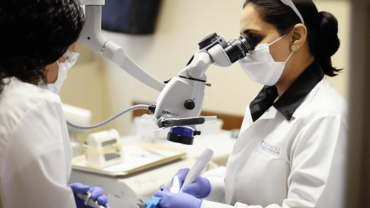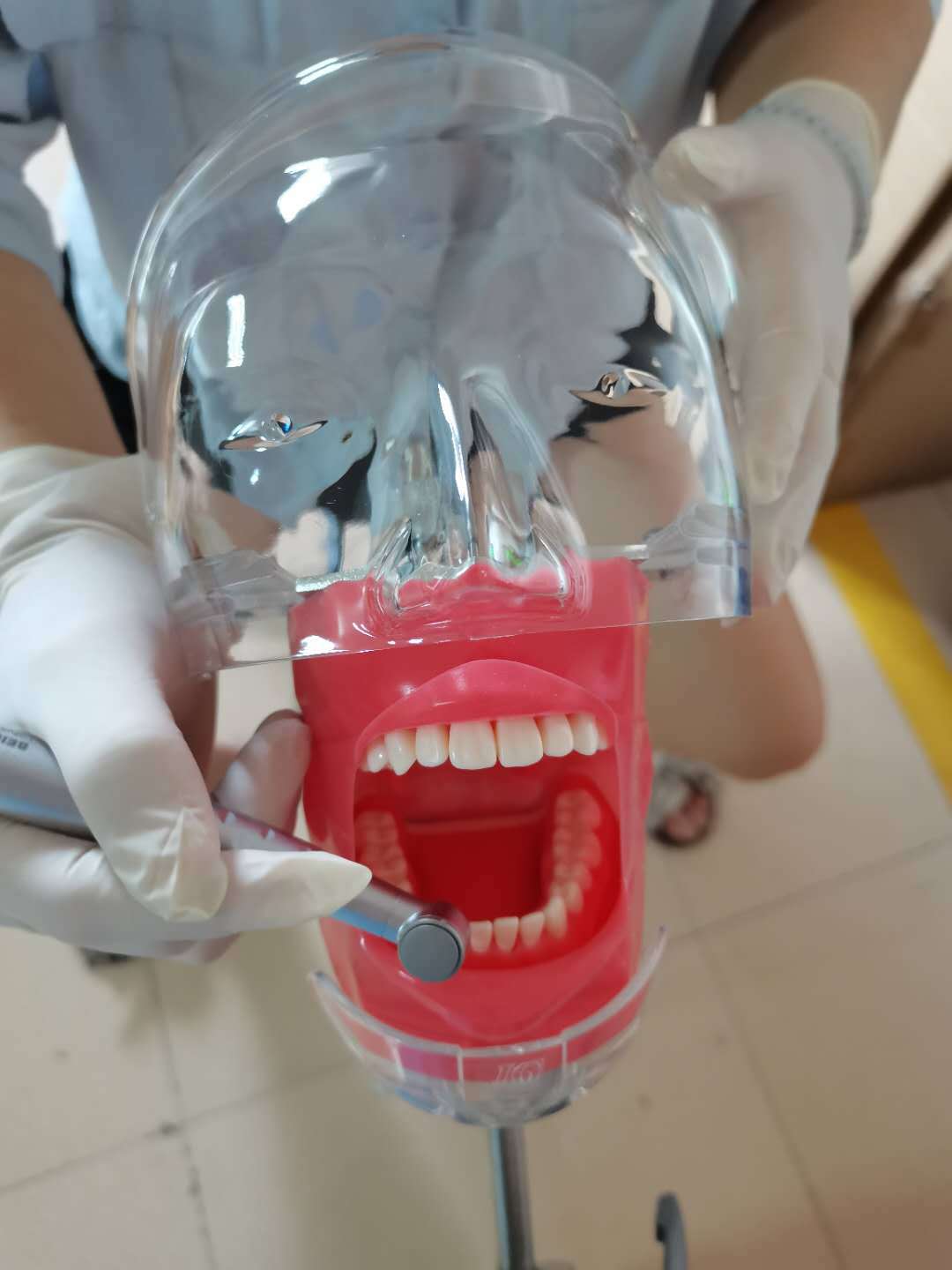A tooth is made up of several different layers of tissue. The tooth crown is covered in enamel, the hardest substance in the human body. The main component of the tooth is the less hard dentine. This substance, also known as dentin, surrounds the inside of the tooth, the so-called pulp.
The pulp lies in the root canal, contains the finest blood vessels and nerves, runs through the entire tooth to the tip of the root and is here in connection with the blood circulation. This is because the tooth is supplied from inside the tooth and the hard tooth substances are formed during growth. In the area of the tooth root, the dental cement covers the dentin.
Endodontics (= “in the tooth”) is a branch of dentistry that deals with the inside of the tooth, the diseases of the tooth pulp and dentine. The area of responsibility of an endodontist includes the treatment of “dead” or traumatized teeth, root canal treatments and tip resections. Root canal treatments always aim to ensure tooth preservation.
When does a tooth need endodontic treatment?
Inflammation inside the tooth can affect the pulp, dentin and the tip of the root. The triggers are usually caries bacteria that penetrate the inner tooth tissue and spread here. Such inflammations are very often the cause of severe toothache and require rapid root canal treatment by a specialist dentist.
Tooth injuries from an accident can also lead to inflammation or infection inside the tooth.
How can you tell whether the pain is coming from inside the tooth?
The pain symptoms are very important for the diagnosis. But it is often not easy for patients to pinpoint the exact location of the pain. Because pain often radiates into the surrounding tissue, so that the actual focus is not clearly identified and may not be related to the teeth at all.
Accurate documentation of the pain progression and the patient’s medical history are therefore extremely important for the diagnosis:
When and where did the pain first appear?
Are there fluctuations in the daytime?
Is the pain permanent or intermittent, sharp or pulsating?
Is there any swelling on the face?
What dental treatments have you done in the past?
Are there any known symptoms of CMD?
Are teeth colored dark? Has there been an accident with a tooth injury in the past?
How is a tooth treated endodontically?
A prerequisite for a reliable diagnosis is the preparation of an X-ray of teeth and jawbones, ideally with 3D X-ray technology. Treatment of the root canal is the focus of endodontic therapy. The dentist uses special fine instruments and files with which he prepares and enlarges the root canal. This takes place in several steps with precise up and down movements of the rotating instruments, is very time-consuming and requires a good instinct from the dentist. Because the root canals are not always straight, but can also be curved. This makes the preparation of the root canal more difficult and takes longer. X-rays provide information about the length and shape of the individual root canals and the extent of the inflammation.
The prepared canal must then be thoroughly rinsed with disinfecting solutions and made pervious to remove inflamed tissue and bacteria. Finally, the dentist dries the canal with fine paper points and seals it with special filling materials such as gutta-percha rubber sticks, pastes or cement to prevent bacteria from re-entering.
Useful and qaulity dental material resource as followings:
- Instrument for root canal treatment
https://www.dentallaboratorio.com/what-instruments-are-used-in-root-canal-treatment/
- Orthodontic dental supply
- Carbide burs dental
https://www.dentallaboratorio.com/product-category/dentist-dental-supplies/fg-carbide-burs/




